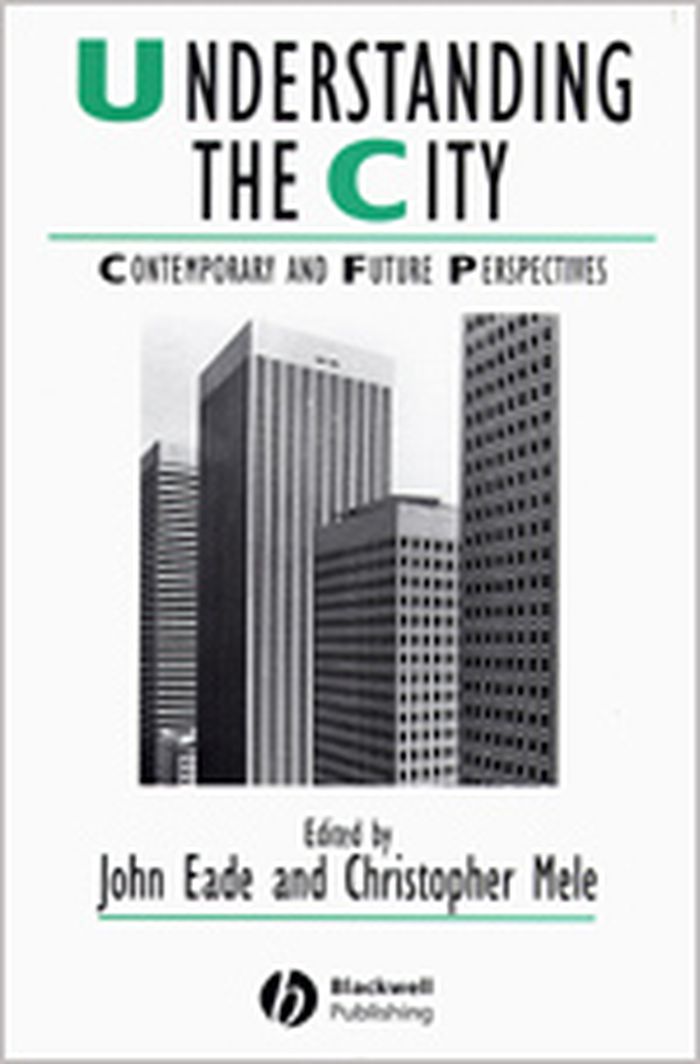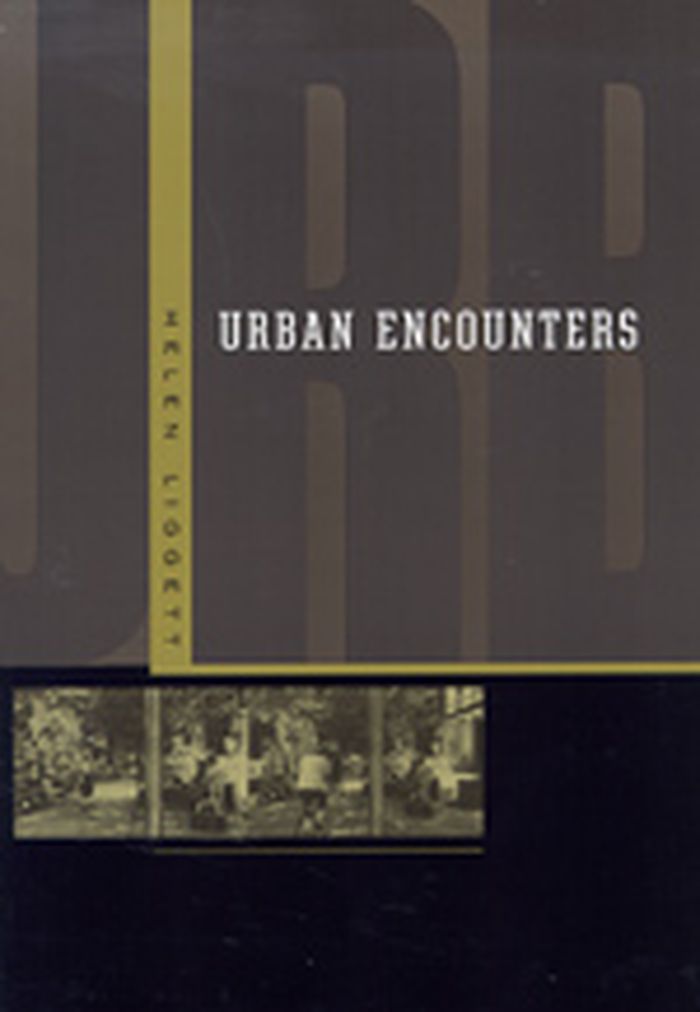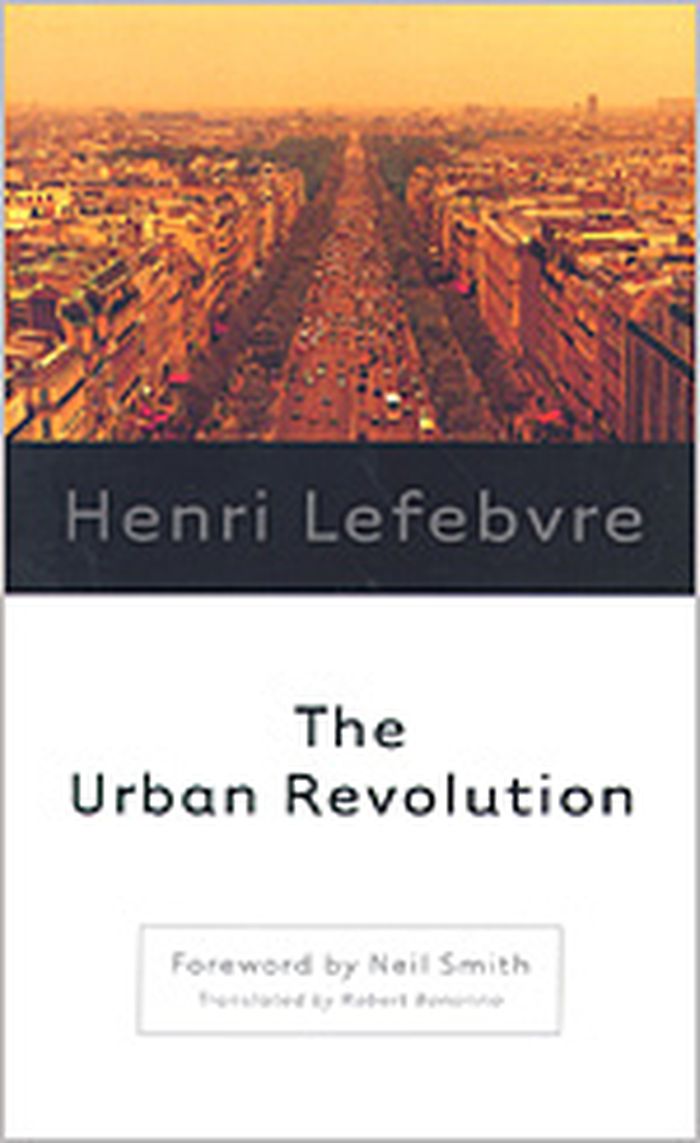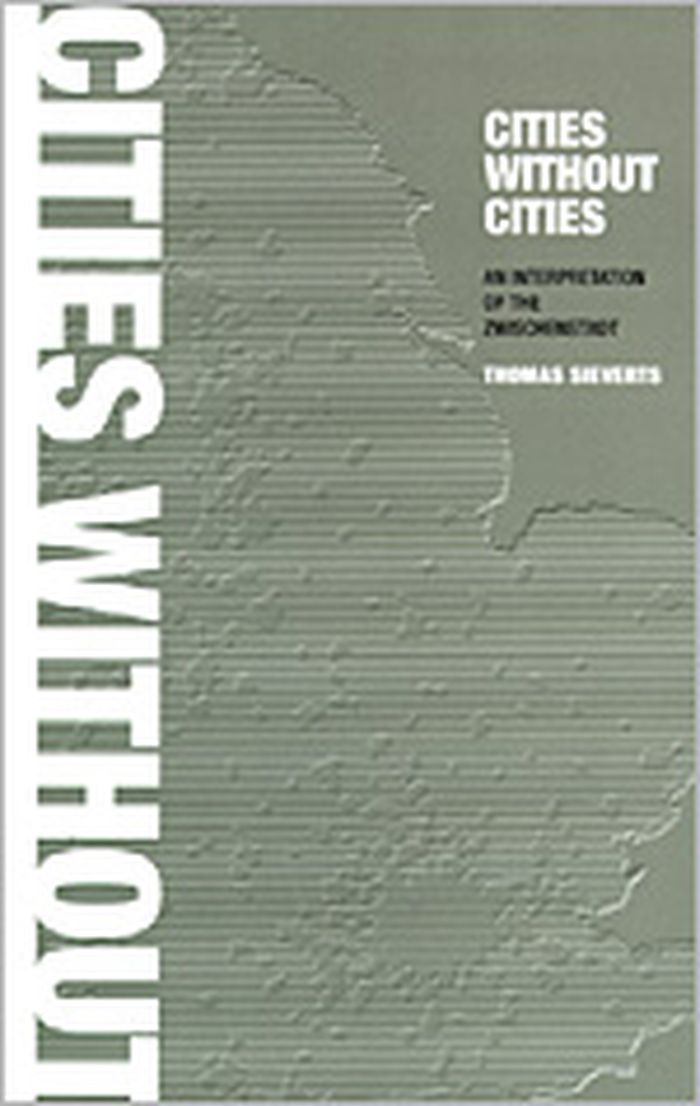$55.95
(disponible sur commande)
Résumé:
This multi-disciplinary analysis looks ahead to the direction which the study of urban society is likely to take during the twenty-first century. Leading researchers from sociology, geography, anthropology and cultural studies examine the research issues which emerged during the 1990s, particularly from political economy and cultural turn perspectives. Their exploration(...)
Understanding the city : contemporary and future perspectives
Actions:
Prix:
$55.95
(disponible sur commande)
Résumé:
This multi-disciplinary analysis looks ahead to the direction which the study of urban society is likely to take during the twenty-first century. Leading researchers from sociology, geography, anthropology and cultural studies examine the research issues which emerged during the 1990s, particularly from political economy and cultural turn perspectives. Their exploration reveals both how urban studies has fragmented, and how a new middle ground for future debate and research has arisen. The volume brings together theoretical discussion of urban studies with analyses of urban processes at both regional and local levels around the globe. It enables readers to assess the degree to which differing perspectives have produced dynamic diversity as well as areas of mutual interest, creating exciting possibilities for urban studies locally and globally.
Théorie de l’urbanisme
livres
After the city
$63.50
(disponible sur commande)
Résumé:
The city's reign over our senses, our moods, our very ways of being is outmoded. The suburban metropolis has superseded the city. The new building materials are non-material: electricity, telephony, weather, time, and so forth. Consequently, according to Lars Lerup, architecture and architects must be rethought. Until now, architects have been trained to serve the(...)
After the city
Actions:
Prix:
$63.50
(disponible sur commande)
Résumé:
The city's reign over our senses, our moods, our very ways of being is outmoded. The suburban metropolis has superseded the city. The new building materials are non-material: electricity, telephony, weather, time, and so forth. Consequently, according to Lars Lerup, architecture and architects must be rethought. Until now, architects have been trained to serve the elite few, as reflected in a belief in customization and the uniqueness of each project. Instead, Lerup holds, architectural educators should promote teamwork and the design of authorless objects, combined with an integration of design and practice. Before we can rethink the architectural curriculum, however, we must rethink the metropolis. And rethink the metropolis is just what Lerup does. In an intellectually far-ranging yet intensely personal manner, he moves from contemplation of the form and philosophical implications of the Pantheon to a discussion of how Levittown residents seek and create community. The result is an exhilarating work with profound practical implications. Unlike the many who view suburbia with paranoid dismay, Lerup takes an optimistic view of the new, open metropolis--for him not the site of unavoidable uniformity and mediocrity, but an exciting new frontier.
livres
mai 2000, Cambridge, Mass.
Théorie de l’urbanisme
livres
$28.95
(disponible sur commande)
Résumé:
Davis focuses on the great drama of how Latinos are attempting to translate their urban demographic ascendancy into effective social power. Pundits are now unanimous that Spanish-surname voters are the sleeping giant of US politics. Though the overall vote in the 1996 elections(...)
Magical urbanism : Latinos reinvent the U.S. big city
Actions:
Prix:
$28.95
(disponible sur commande)
Résumé:
Davis focuses on the great drama of how Latinos are attempting to translate their urban demographic ascendancy into effective social power. Pundits are now unanimous that Spanish-surname voters are the sleeping giant of US politics. Though the overall vote in the 1996 elections declined significantly, the Latino share rose by a spectacular 16%. Yet electoral mobilization alone is unlikely to redress the increasing income and opportunity gaps between urban Latinos and suburban non-Hispanic whites. Thus in Los Angeles and elsewhere, the militant struggles of Latino workers and students are reinventing the American left. "Magical Urbanism" is fascinating reading for anyone who wants to grasp the future of urban America.
livres
juin 2000, New York
Théorie de l’urbanisme
livres
$37.95
(disponible sur commande)
Résumé:
How and why America's inner cities have begun recovering from the pervasive crime and social disorder that plagued them only a decade ago. "Comeback Cities" shows how innovative, pragmatic tactics for ameliorating the nation's urban ills have produced results beyond anyone's expectations, reawakening(...)
Théorie de l’urbanisme
septembre 2000, Boulder
Comeback cities : a blueprint for urban neighborhood revival
Actions:
Prix:
$37.95
(disponible sur commande)
Résumé:
How and why America's inner cities have begun recovering from the pervasive crime and social disorder that plagued them only a decade ago. "Comeback Cities" shows how innovative, pragmatic tactics for ameliorating the nation's urban ills have produced results beyond anyone's expectations, reawakening America's toughest neighborhoods. In the past, big government and business working separately were unable to solve the inner city crisis. Rather, a blend of public-private partnerships, grassroots nonprofit organizations, and a willingness to experiment characterize what is best among the new approaches to urban problem solving. Pragmatism, not dogma, has produced the charter school movement and the police's new focus on "quality-of-life" issues. The new breed of big city mayors has welcomed business back into the city, stressed performance and results at city agencies, downplayed divisive racial politics, and cracked down on symptoms of social disorder. As a consequence, America's inner cities are becoming vital communities once again.
livres
septembre 2000, Boulder
Théorie de l’urbanisme
$29.95
(disponible sur commande)
Résumé:
"Big plans : the allure and folly of urban design" springs from the idea that human aspirations for the city tend to overstate the role of rationality in public life. Inspired by the architectural and urban criticism of such writers as Lewis Mumford, Jane Jacobs, and John Brinckerhoff Jackson, Kolson adopts a user's perspective on issues of urban design, an approach that(...)
Big plans : the allure and folly of urban design
Actions:
Prix:
$29.95
(disponible sur commande)
Résumé:
"Big plans : the allure and folly of urban design" springs from the idea that human aspirations for the city tend to overstate the role of rationality in public life. Inspired by the architectural and urban criticism of such writers as Lewis Mumford, Jane Jacobs, and John Brinckerhoff Jackson, Kolson adopts a user's perspective on issues of urban design, an approach that highlights both the futility of social engineering and the resilience of the human spirit.
Théorie de l’urbanisme
$58.95
(disponible sur commande)
Résumé:
Rotterdam's history has left it particularly marked by movement and transit. Construction of a modern transport infrastructure began before 1940, and continued with renewed vigour during and after the postwar reconstruction. The cityscape is defined by waterways, bridges, streets, arterial canals, avenues and a rhomboid motorway system. The city serves as a good case(...)
In transit : mobility, city culture and urban development in Rotterdam
Actions:
Prix:
$58.95
(disponible sur commande)
Résumé:
Rotterdam's history has left it particularly marked by movement and transit. Construction of a modern transport infrastructure began before 1940, and continued with renewed vigour during and after the postwar reconstruction. The cityscape is defined by waterways, bridges, streets, arterial canals, avenues and a rhomboid motorway system. The city serves as a good case study and illustration of the relationship between mobility and urban development. This book uses word and image to examine the social significance of mobility. The authors draw on Rotterdam examples to illustrate the link between mobility and urban development.
Théorie de l’urbanisme
$22.00
(disponible sur commande)
Résumé:
Through magazine articles and through his previous book, "The Geography of Nowhere", James Howard Kunstler has become one of the foremost decriers of the blighted urban landscape of the United States. Now, in this new sequel to the earlier book, Kunstler moves from description to prescription. The villains, Kunstler says, are zoning laws, real estate taxes, modernist(...)
Home from nowhere : remaking our everyday world for the twenty-first century
Actions:
Prix:
$22.00
(disponible sur commande)
Résumé:
Through magazine articles and through his previous book, "The Geography of Nowhere", James Howard Kunstler has become one of the foremost decriers of the blighted urban landscape of the United States. Now, in this new sequel to the earlier book, Kunstler moves from description to prescription. The villains, Kunstler says, are zoning laws, real estate taxes, modernist architecture, and, particularly, the automobile. The solutions include multi-use zoning districts, car-free urban cores, revised tax laws, Beaux-Arts design principles, and, in particular, the neo-traditionalist school of architecture and city planning known as "new urbanism." Kunstler's larger goal is a return to a saner urban geography and, with it, to a saner way of life.
Théorie de l’urbanisme
Urban encounters
$38.95
(disponible en magasin)
Résumé:
Liggett's "encounters" with the urban are sequences of images and text that combine the joy of observing with the pleasure of making connections. For Liggett, this entails recognizing both beauty and danger. Alternately complementing and complicating her text, Liggett's photographs capture the small details-the gestures, glances, and reflections-that together compose the(...)
Urban encounters
Actions:
Prix:
$38.95
(disponible en magasin)
Résumé:
Liggett's "encounters" with the urban are sequences of images and text that combine the joy of observing with the pleasure of making connections. For Liggett, this entails recognizing both beauty and danger. Alternately complementing and complicating her text, Liggett's photographs capture the small details-the gestures, glances, and reflections-that together compose the urban experience. As a whole, "Urban encounters" reimagines the city as a site of profound engagement with life.
Théorie de l’urbanisme
The urban revolution
$30.95
(disponible sur commande)
Résumé:
Originally published in 1970, The Urban Revolution marked Henri Lefebvre’s first sustained critique of urban society and is widely considered a foundational book in contemporary thinking about the city. This first English edition, translated by Robert Bononno, makes available to a broad audience Lefebvre’s sophisticated insights into the urban dimensions of modern life.(...)
The urban revolution
Actions:
Prix:
$30.95
(disponible sur commande)
Résumé:
Originally published in 1970, The Urban Revolution marked Henri Lefebvre’s first sustained critique of urban society and is widely considered a foundational book in contemporary thinking about the city. This first English edition, translated by Robert Bononno, makes available to a broad audience Lefebvre’s sophisticated insights into the urban dimensions of modern life. Foreword by Neil Smith.
Théorie de l’urbanisme
$64.95
(disponible sur commande)
Résumé:
This book investigates the characteristics of today's built environment: no longer simply a city but increasingly large conurbations made up of a number of development clusters, linked by transport routes. The diffusion of the once compact city into a city web, the 'meta city' is mirrored by changes in society from communities with strong social cohesion and interest in(...)
Cities without cities : an interpretation of the Zwischenstadt
Actions:
Prix:
$64.95
(disponible sur commande)
Résumé:
This book investigates the characteristics of today's built environment: no longer simply a city but increasingly large conurbations made up of a number of development clusters, linked by transport routes. The diffusion of the once compact city into a city web, the 'meta city' is mirrored by changes in society from communities with strong social cohesion and interest in their towns and cities to individuals pursing their own goals, with global social links and little interest in their own town or city other than the quality of their personal space. The account is complex and on a number of levels; social, philosophical, economic and environmental. The difficulties in managing or even controlling the city web, divided arbitrarily into areas of limited size and political power, are enormous. Areas compete with each other rather than co-operate. The book provides a better understanding of this new type of urban form and argues for a change in planning systems for better management.
Théorie de l’urbanisme






